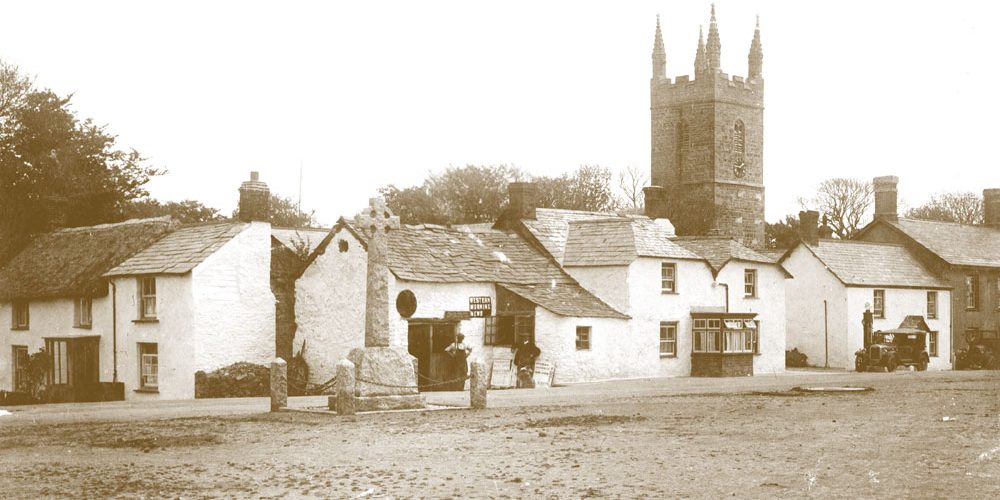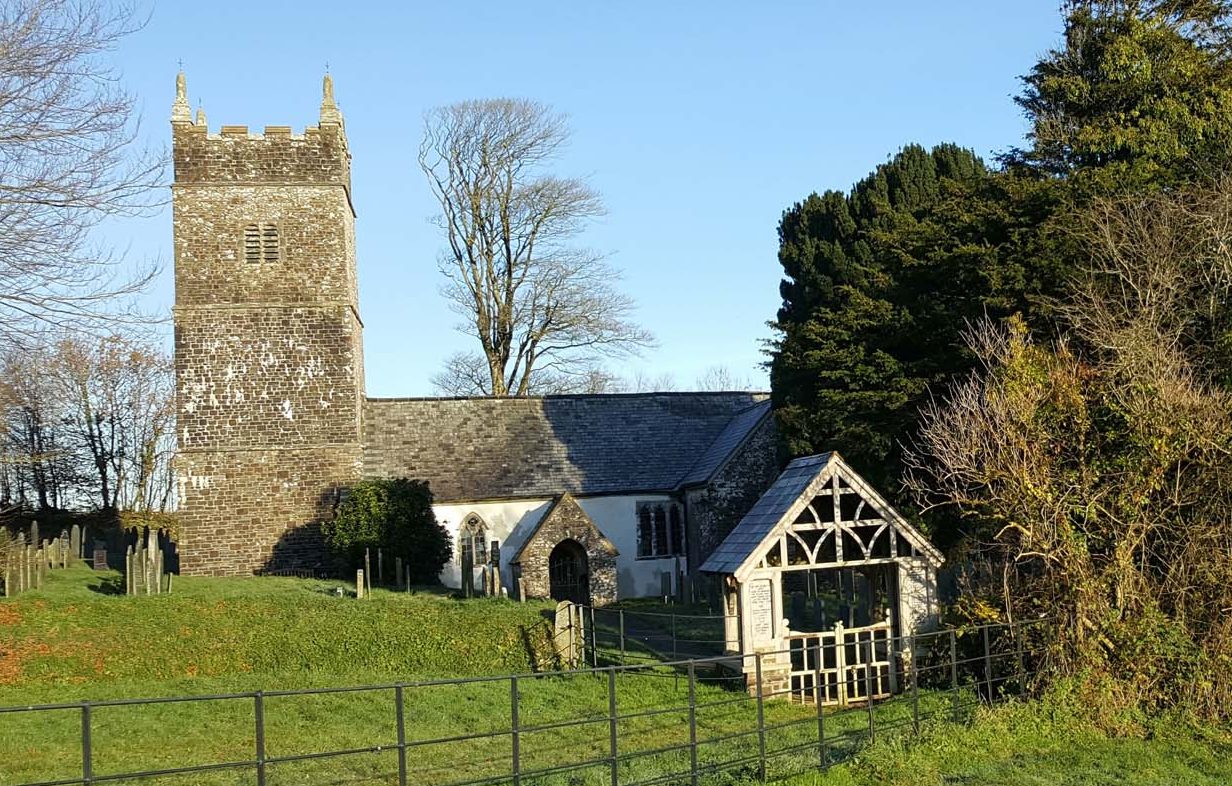
The origin of the first Christian church in the two Putfords is a little more uncertain. Devon was evangelised extensively by Celtic saints during the sixth century (many local churches are dedicated to these local saints) and the Anglo-Saxon farmers who colonised the county after AD 682 would have also been Christians. There is a good chance that an Anglo-Saxon church once stood on the site of the contemporary building in West Putford, but these early churches were generally made of timber so very little of them now survives.
The present stone church dates from the early fourteenth century, at the end of the great era of church-building during the early Middle Ages. The only object in the present church that predates this fourteenth century church is the Norman font with its unusual oval shape and its band of cable moulding carved onto its stem. Early fonts were often carefully preserved when churches were rebuilt as they were seen as evidence of the right of the medieval priest to baptise.
West Putford Church
West Putford Church, dedication of which is thought to be to St. Stephen, stands on the hill to the west of the River Torridge, a hundred yards from the old Post Office and the now redundant village School. The parishes of East and West Putford have shared West Putford Church for several years, and together these parishes cover just over 5,000 acres of fertile farmland. The population of the villages and farms within the two parishes stood at 320 in 2011. The villages of the two Putfords lie on either bank of the River Torridge, and they are situated in the north-west corner of Devon, six miles from the north coast.
Objects within the church that date from the fourteenth century stone building are the oak beams in the north transept ceiling with their carved wooden heads, and also the stoup or container for holy water set into the wall beside the south door. There was also once a carved wooden rood screen that blocked off the chancel from the nave. This can be ascertained from the location of a stair set into the north transept wall that would have led to the top of the former rood screen. Both the rood screen and the stoup would have been dismantled or put into disuse in the wake of the sixteenth century Protestant Reformation. There is also a small window in the north transept that according to local legend was once used by lepers so that they could watch services taking place from outside the church. The embattled tower at the west end of the church was added during the late fifteenth century, and this is also the approximate date when the tiles on the chancel floor were laid. These tiles were almost certainly made in Barnstaple and some appear to depict royal emblems of the late Middle Ages such as fleur-de-lis, swans, roses and lions.
East Putford Church
East Putford was a parish and village on the river Torridge, 10 miles south west from Bideford Station, and 9 miles west-south-west from Torrington Station, both on a branch line of the Southern (late London and South Western) Railway, in the Barnstaple division of the county, Shebbear Hundred, Bideford petty Sessional division, union and county court district, rural deanery of Holsworthy, in the archdeaconry of Totnes at that time and in the diocese of Exeter.
The church (dedication unknown) was first built during the Middle Ages as a chapel within the parish of Buckland Brewer, an ancient building of stone of mixed styles, consisting of chancel, nave, north transept, south porch and a belfry containing one bell, cast about 1842 from the two bells previously existing. The church was almost wholly rebuilt in 1882, the chancel being restored by J C Moore-Stevens Esq; there were 100 seats (approx.). The registers date from the year 1671. The living was a chapelry, annexed to the rectory of West Putford, joint net yearly value £333, including 89 acres of glebe, with residence, in the gift of Miss C M Rowland, and held from 1913 by the Rev. Charles David Jenkins, L.Div. of St David's College, Lampeter, who resided at West Putford.
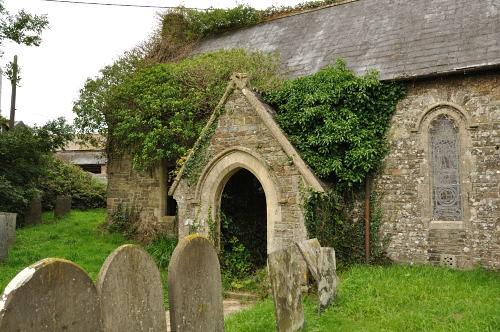
On the 5th April 1971 a scheme was published by the Church Commissioners for:
- declaring redundant the Church of East Putford, a chapel of ease within the parish of West Putford with East Putford in the Diocese of Exeter, and
- altering the name of the benefice and parish of West Putford with East Putford to ‘The benefice (and parish) of Putford’.
These pictures were provided by descendants of the Farewell family who lived at Little Silworthy from about 1924 to 1941 when they moved to Kingsbridge. Mrs Farewell was influential in the local Womens Institutes, being President of Bradworthy W.I. when it was founded in 1925 and also President of Putford W.I. which began in 1927. Both she and Captain Farewell were very active in the church.
The garden pictures probably come from 1938 when they hosted a fete and gymkhana in aid of church funds.
The W.I. Christmas card was presumably sent to Mrs Farewell after she left the area. It is initialled from "K.N.G." This might be Kathleen Guy (Julians) who was active in the W.I.
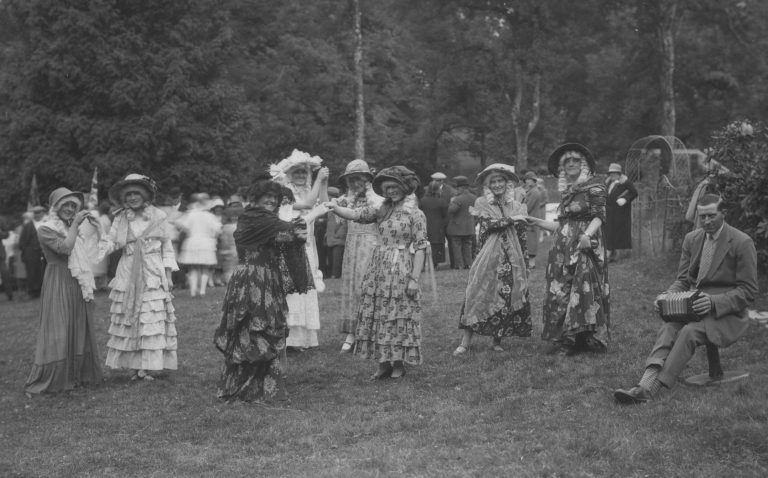
Accordion player is Mr Bale
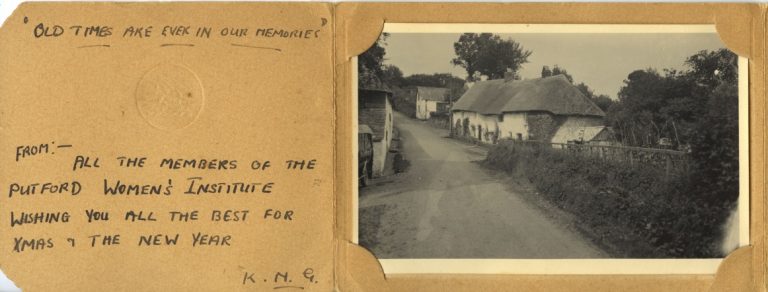
W I Christmas Card
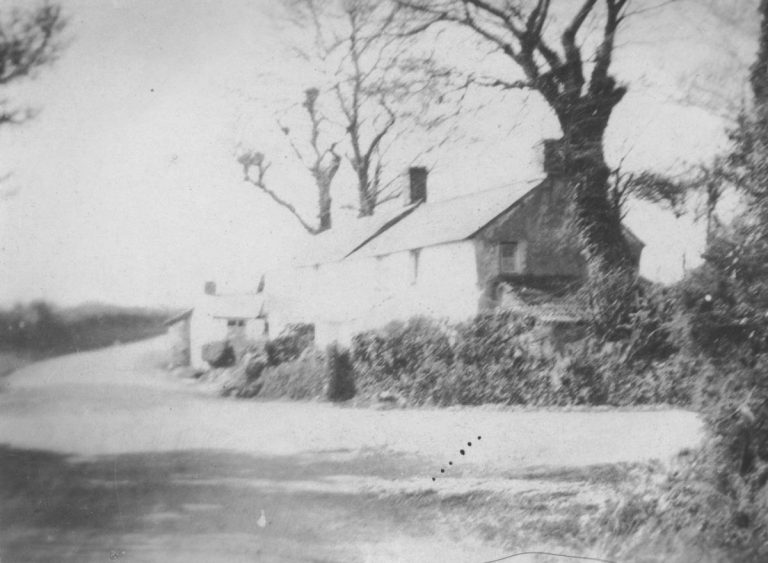
Parsonage Cross
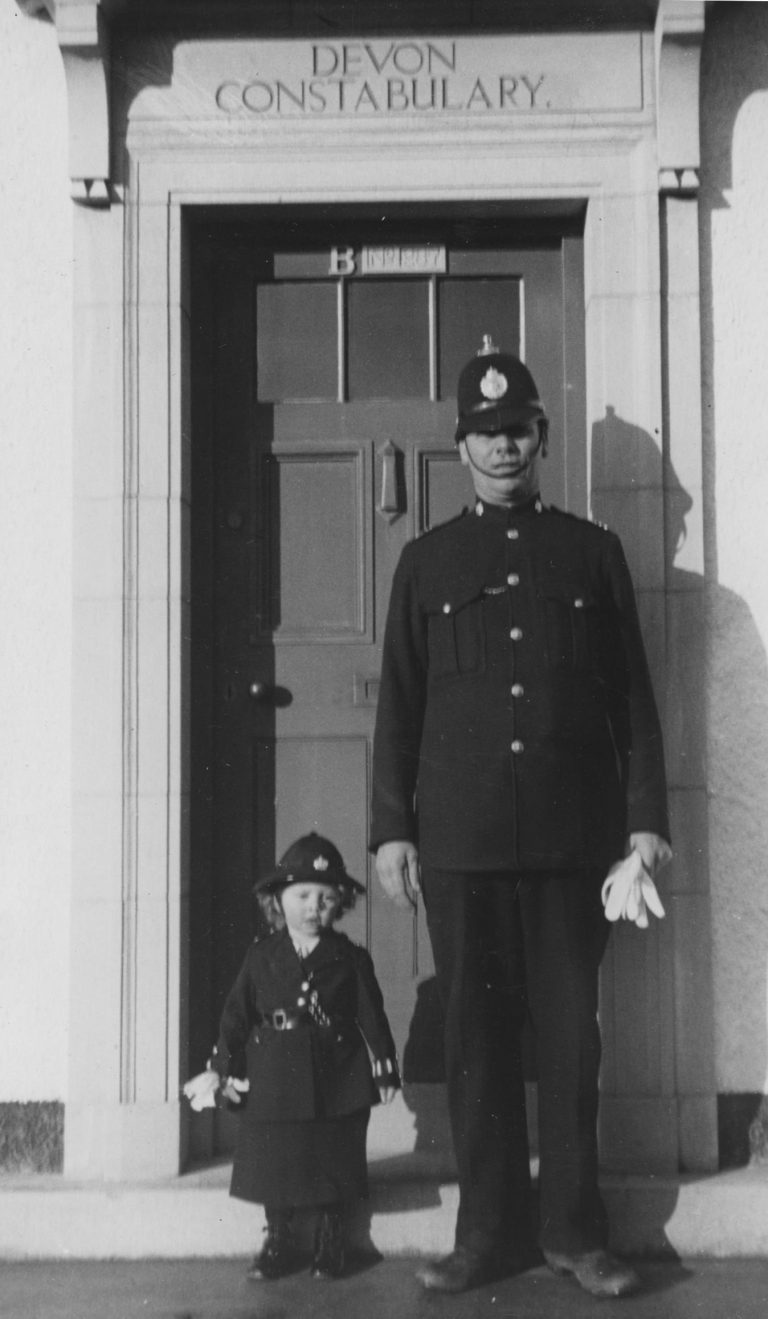
The policeman was PC Horwood who was based in Bradworthy
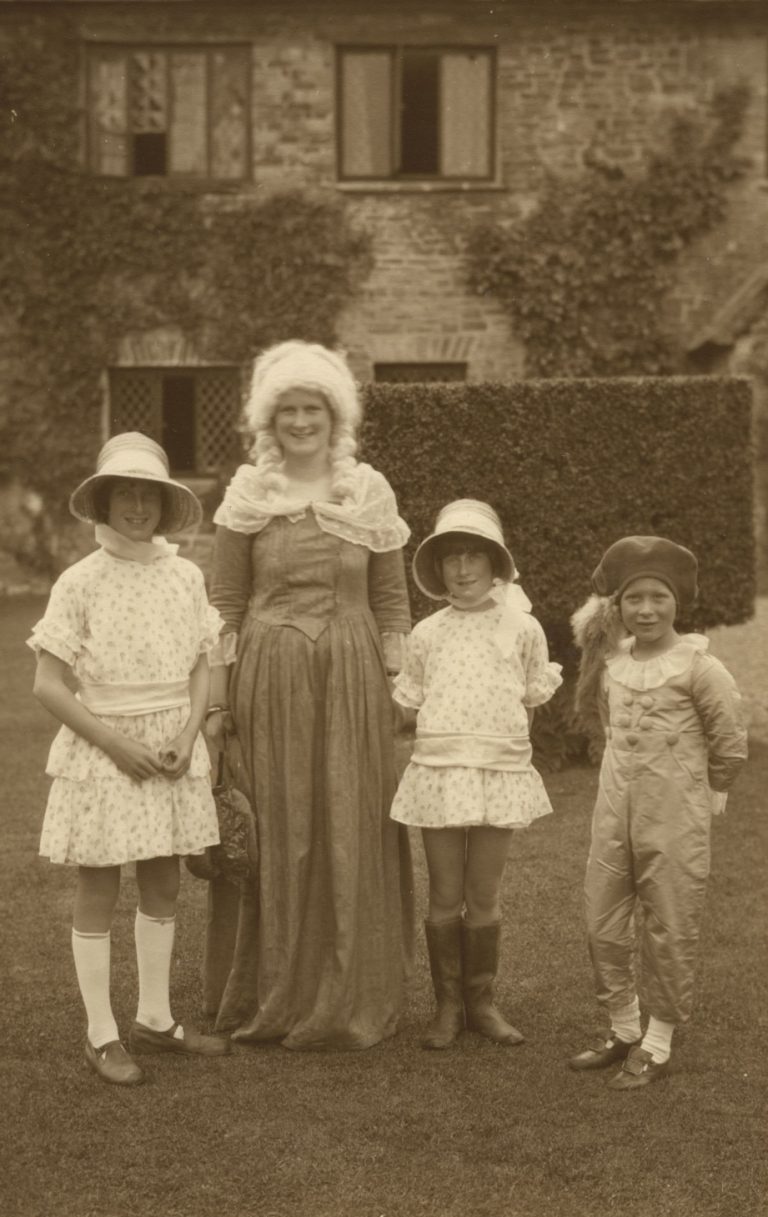
Anne, Joan, Alex and Tom Farewell
A selection of images kindly supplied by Bradworthy History Society
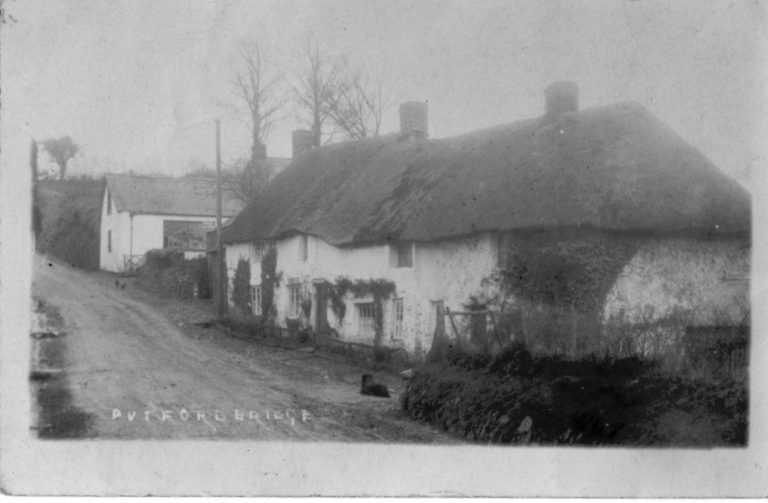
River Cottage and Shoemakers

Putford Post Office
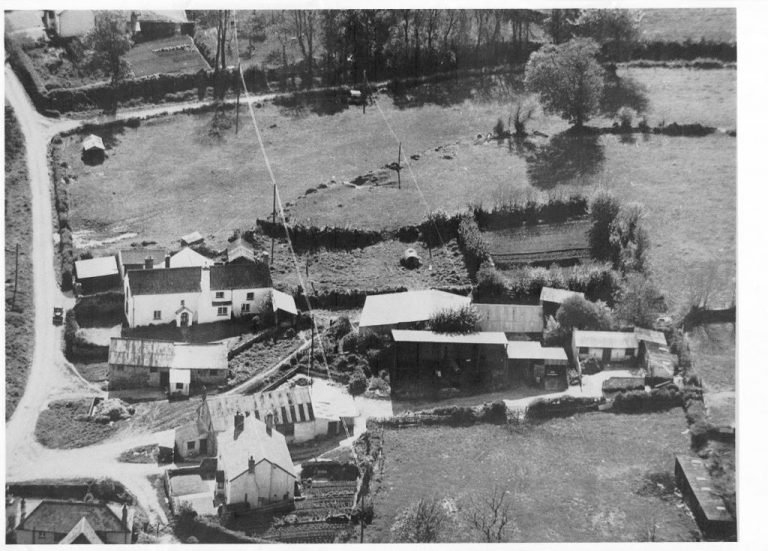
Raleigh, East Putford
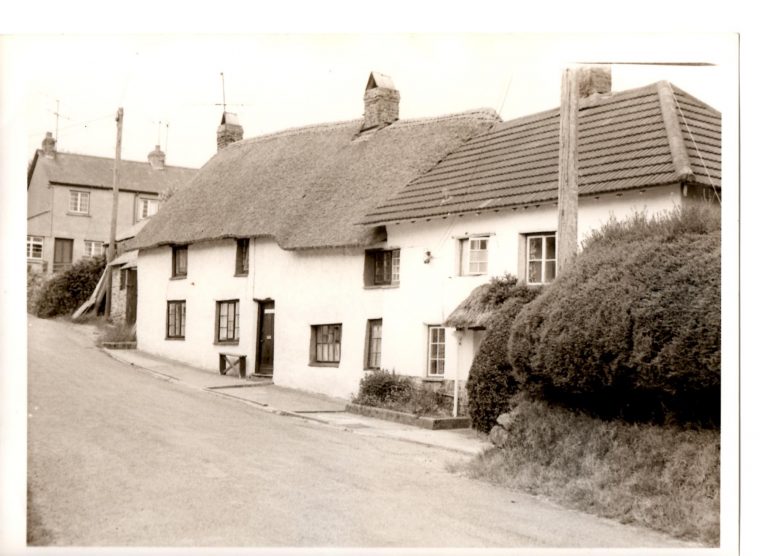
River Cottage and Shoemakers
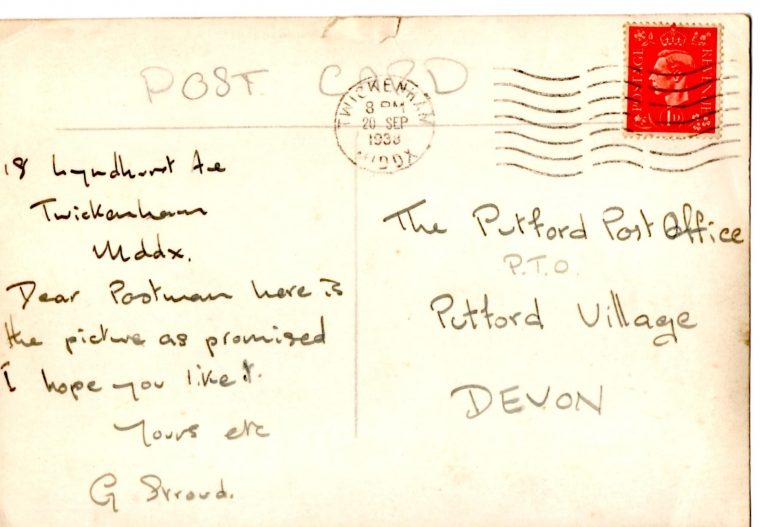
Putford Post Card
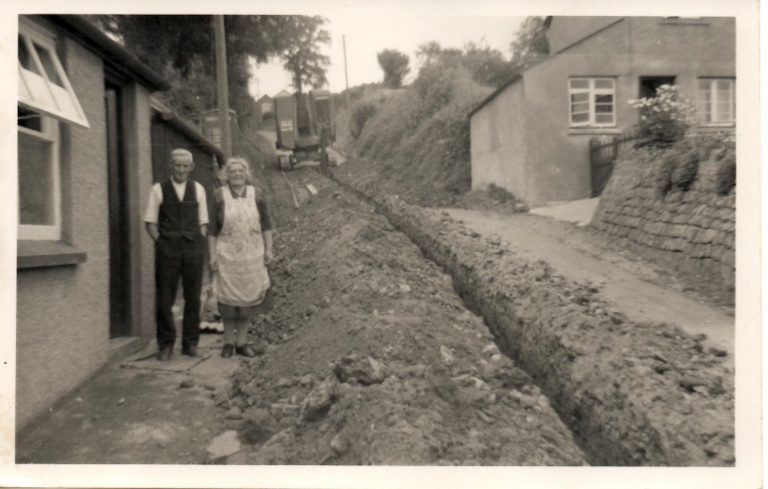
Mains water comes to Putford

